You wouldn’t try to repair your kitchen sink without referring to a manual or an expert.
So why would you let your business advertise on Facebook without understanding the best practices and consulting a Facebook advertising agency?
When you’re ready to take your brand to the next level with Facebook advertising, you should know how to launch, run, and optimize your campaign.
Get to know the built-in tools at your disposal.
Refine your goals and understand how to measure and analyze your performance.
Test and re-test every ad.
Want a 75% increase in your ROI?
Well, it’s time to start advertising on Facebook, and here’s how.
A Quick Refresher: Why You Should Advertise on Facebook
You probably don’t need much convincing to understand the importance Facebook plays in your customers’ lives.
Let’s put it this way: Facebook is, by far, the most popular social networking site, and has been so since overtaking Myspace in 2008.
Just at the end of June, the social media platform hit 2 billion monthly active users.
With those kinds of numbers, you can pretty much guarantee your target audience is using the site.
A few other compelling reasons Facebook ads are the right choice:
- They’re far cheaper than traditional advertising methods: It takes on average of $20 to reach 1,000 people through a magazine ad; Facebook advertising costs $0.25 to reach the same size audience.
- The array of tools Facebook offers within its Power Editor platform allows for hyper-targeting. The more effectively you’re reaching customers, the better your ROI on an ad campaign.
- Lead generation is both more effective and easier using Facebook’s Lookalike Audience feature.
Create a Website Custom Audience
The Custom Audience tools provided by Facebook are some of the most effective and easy-to-use available.
They allow advertisers to hone in on an audience based on demographics, behavior, etc.
One of these such behaviors includes visiting your website.
The Custom Audience from Your Website Facebook advertising feature lets you target people that have visited or taken another form of action on your website.
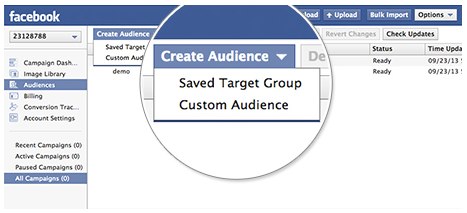
Source: https://www.socialmediaexaminer.com
What this translates to is best provided in an example.
Let’s say you are an ecommerce brand that sells handbags.
You have a blog post on your site that’s a guide on how to pick the right handbag for any occasion.
If you set up Website Custom Audience, anyone who views that post can then be directed to your Facebook.
Now, they will not just see your Facebook profile page; they can instead see a related post with each of your handbags listed and a CTA direct-to-buy.
It’s another opportunity for converting people who didn’t otherwise do so when visiting your site by providing them with more compelling, targeted content.
Test, Test, then Test Your Facebook Ad Again
Split testing your Facebook ads is the key to identifying the highest-performing keywords.
It’s also the best strategy in Facebook marketing for identifying what’s working and fixing what’s not in order to optimize your campaign.
Structure your Facebook advertising campaign so that you have one ad running below each overarching ad set.
Between these ads, change one detail so that you can easily identify the feature that is succeeding or failing.
This also makes it easier to turn off a set that’s not performing well.
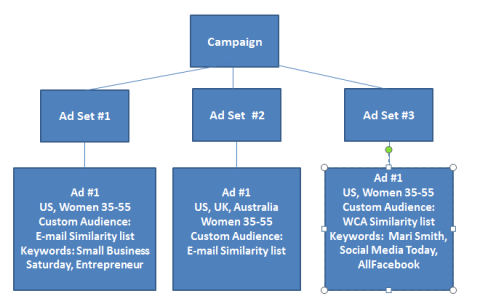
Source: https://www.socialmediaexaminer.com
Facebook makes setting up a split campaign as simple as possible: Just check the box under the Conversions page of your Ads Manager.
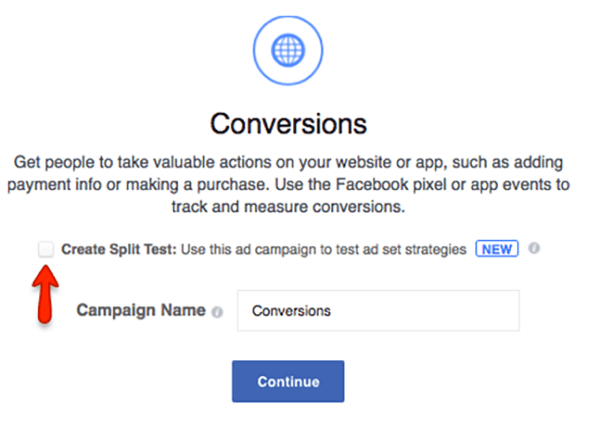
Source: https://www.socialmediaexaminer.com
Success is calculated by tracking the ads with the lowest CPC and highest CTR.
Those that are performing well in these measurements are the ones you should look to for the features that are working: Keywords, visuals, etc.
Analyze Your Audience Insights
At your disposal when marketing on Facebook is detailed audience insights.
These allow you to better understand your customers’ behavior, demographics, preferences, and more.
This tool is especially helpful for narrowing down an otherwise broad audience.
For example, if your company sells running shoes and you’re thinking of targeting people with the interest “running”, that vague term will yield an audience size in the millions.
Instead, you can use the Facebook Audience Insights tool.
This will find related search terms to more specifically target a relevant consumer base.

Source: https://www.agorapulse.com
Once you’ve entered the Audience Insights tool in Ads Manager, you can select the type of audience to monitor and observe.
You can then select from a whole list of interests, demographics, and behaviors to further refine the audience and yield more specific results.
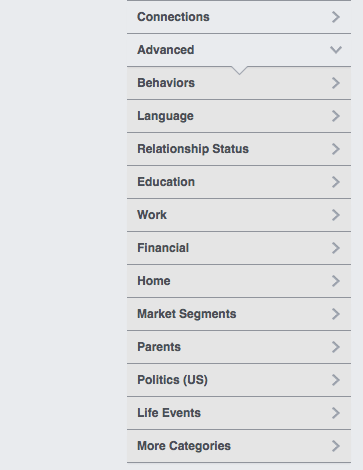
Source: https://www.agorapulse.com
From here, you can toggle through demographics, location, and more to get a deeper understanding of your audience.
Doing so will allow you to create more effective Facebook ads that are more compelling in converting a user into a customer.
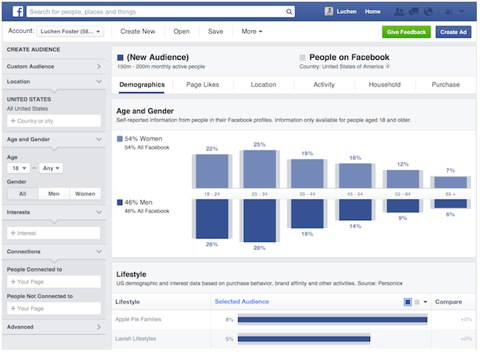
Source: https://www.socialmediaexaminer.com
Make Your Facebook Advertisement Specific
Whatever CTA your Facebook ad utilizes, make sure its directing people to something more specific than just your homepage.
Whether it’s a blog post or landing page, getting users to a more detailed part of your company means a greater chance for lead generation and conversion.
69% of Facebook marketers direct to a landing page from their ad.
Meanwhile, 11% are making the fatal mistake of taking users to their homepage.
Even staying within Facebook is a missed opportunity that 20% of advertisers are falling victim to.
Take full advantage of directing users to a specific landing page by using tools that optimize it for conversions.
SumoMe’s Welcome Mat does just that by creating a landing page that encourages conversions through a full-screen CTA.
Getting your Facebook advertising strategy right is a combination of factors.
You can optimize your campaign for best possible results by combining your own research with that of an experienced Facebook advertising agency.
When approached the right way, Facebook advertising is the most affordable and effective advertising solution for businesses to target and reach more consumers.
In the end, an optimized Facebook ad campaign can yield substantial ROI.
It can also be the basis of a company’s marketing strategy that drives growth forward.








